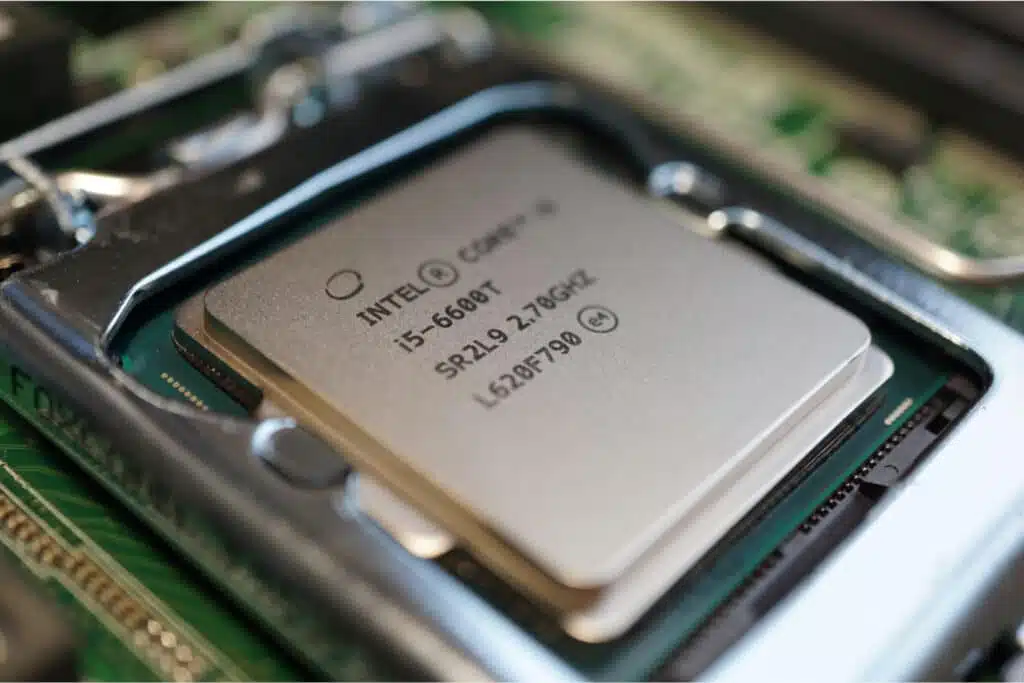29.11.2016

The CPU (Central Processing Unit) is the name for the processor of a computer. The "Central" in CPU is no coincidence. This is because it is the core, the heart of a PC, so to speak. In addition to specific designations for a CPU, the clock frequency provides information on how quickly a processor can perform operations.
By and large, the CPU performs three main tasks:
All data on a computer consists of numbers. To be precise: From zeros and ones. A CPU receives commands, calculates the corresponding amount of data and outputs a new binary code as a result. The higher the clock frequency of a CPU, the more computing processes can be processed in the same time. The clock frequency, which is also referred to as the rhythm, is given in Hertz (Hz for short). One Hz means one beat per second. In the case of a so-called single-core processor, at one gigahertz (GHz for short), this means that around 1,000,000,000 digits can be processed simultaneously.
The control unit, or control unit, is the main component of a processor together with the computing unit. In addition to processing input and output from peripherals (such as printers, scanners, mice, keyboards, etc.), the control unit ensures that the individual components of a processor can work together and coordinates them. The control unit is connected to the individual components via the so-called bus system.
The bus system is a kind of bridge between the individual components of a computer and ensures the exchange of data between them.
Note: The more Hertz a CPU has, the faster the computing speed of a processor (of the same processor family).
But is the clock frequency alone responsible for the speed of a CPU? If only the single-core processors mentioned above were still in use today, the question could easily be answered with "yes". However, since two-core, four-core, six-core, eight-core and even ten-core processors are now used in the desktop sector (as of 2016), the strength of a CPU also depends on the number of cores, among other things.
This brings us to the next important point:
To understand:
As already mentioned, in the past a CPU was mainly made faster by increasing the number of clock rates. Remember: At one GHz, a single-core processor can calculate 1,000,000,000 digits simultaneously per second. At two GHz, it would therefore be 2,000,000,000 digits per second.
However, simply increasing the clock frequency means that enormous temperature increases can be observed in the processor from a performance of 3.00 GHz. The background to this is that a higher clock frequency is achieved by increasing the voltage. The resulting resistance in the thin supply lines generates heat. This is not only extremely inefficient, but also damages the CPU if the cooling is inadequate. For this reason, developers came up with the idea of installing several cores on one CPU. Today, we know two-core (dual-core), four-core (quad-core), six-core (hexa-core), eight-core (octa-core) and ten-core (deca-core) processors in the user sector.
A particularly great advantage of multi-core processors is that the individual cores can perform tasks in parallel with the other cores. Modern software, for example, automatically outsources operations to the individual cores of a processor in order to achieve an even workload. If a core is fully utilized, it is automatically swapped to the next free core, even without intelligent software.
Another advantage is the low power consumption of the multi-core processors. For example, a dual-core processor consumes only half as much energy as a single-core processor. This is because a dual-core processor requires a lower clock frequency for the same performance as a single-core CPU, due to a lower voltage requirement. Ergo: Less power consumption.
Multi-threading is the ability of a single processor core to perform several tasks simultaneously. Multi-threading is therefore very similar to the appearance of a multi-core processor. In plain language, this means that if a quad-core processor is equipped with two threads per core, the system recognizes a total of eight virtual cores and no longer just four real ones. The advantage here is obvious.
Single-core processors have now lost much of their importance in the server, PC and mobile sectors and have been banned from most store shelves, as extensive software in the user area requires at least two processor cores. What progress and how many cores will the future bring? We simply let ourselves be surprised.

Machines that know when they need to be serviced before anything breaks down. Sounds like a dream of...

Digital signage has long been much more than just static screens. In times of Industry 4.0, smart bu...

SCADA systems enable real-time monitoring and control of industrial processes and are central to Ind...
You need to load content from reCAPTCHA to submit the form. Please note that doing so will share data with third-party providers.
More Information